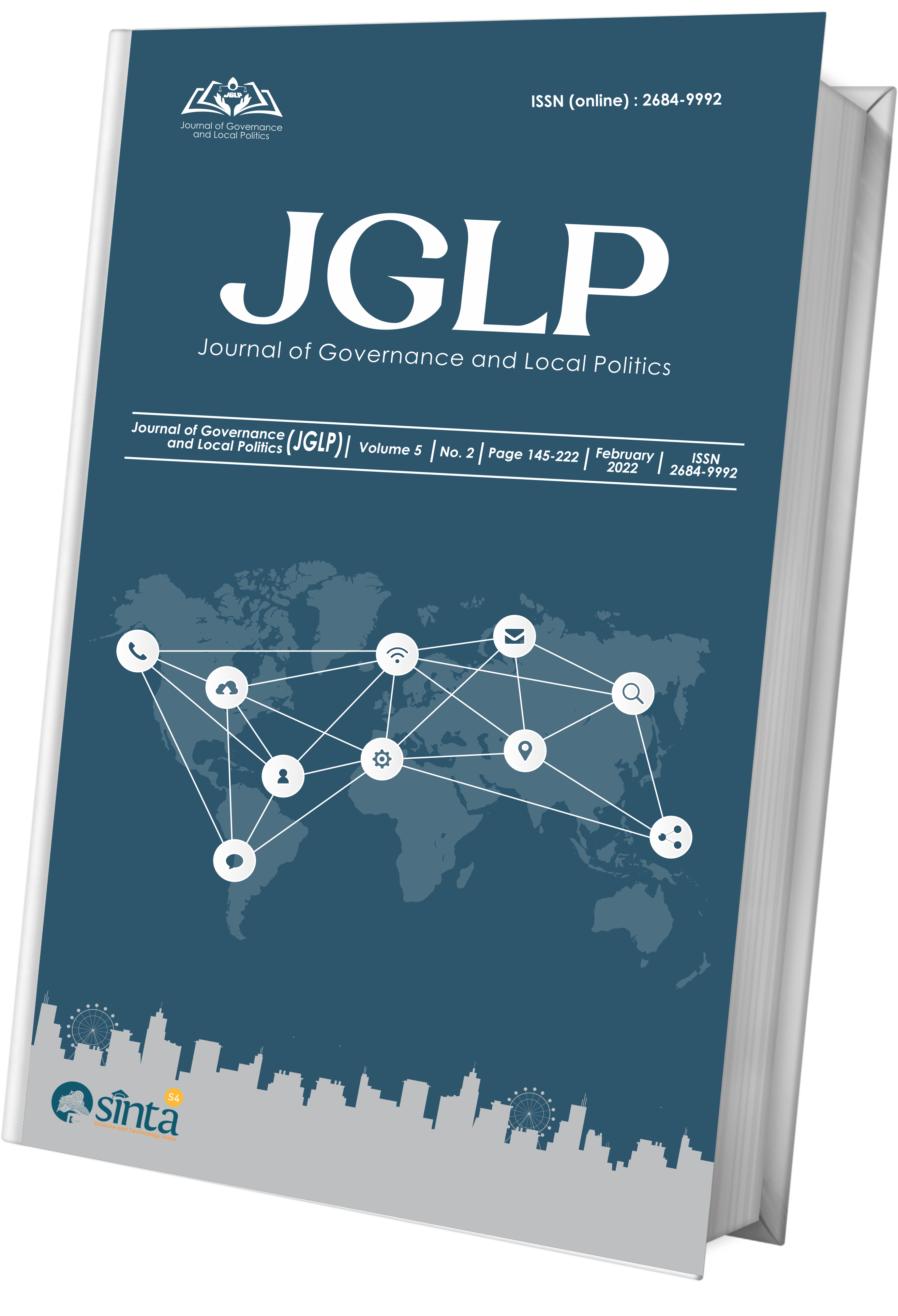Strengthening Water Governance and Regulatory Effectiveness for Equitable Access in Indonesia
Abstract
Water resource management in Indonesia represents a paradox of abundance and scarcity. Despite the country’s vast hydrological potential, approximately 15% of Indonesians still lack reliable access to clean water, with stark inequalities persisting between urban and rural regions. Prior research has primarily emphasized technical and infrastructural dimensions, leaving a research gap in understanding how regulatory frameworks intersect with socio-economic and environmental realities. The urgency of this study stems from persistent disparities in water accessibility, escalating climate change pressures, and weak enforcement of existing laws such as Law No. 17 of 2019 on Water Resources. This study aims to evaluate the effectiveness of regulatory instruments in expanding water accessibility, identify determinants shaping implementation, and assess broader sustainability implications. Employing a qualitative descriptive method with case studies in West Java, East Nusa Tenggara, and South Kalimantan, data were collected through document analysis, in-depth interviews, and field observations. The findings indicate that regulatory effectiveness is heavily influenced by geographic and institutional contexts, with challenges ranging from infrastructural deficits to pollution and climate-induced scarcity. The study recommends adaptive, region-specific regulations, strengthened institutional capacity, and participatory governance to ensure equitable and sustainable water access.
References
Annaifah, S. G. (2024). Tata kelola sumber daya air berkelanjutan-berkeadilan: Bagaimana Indonesia memperkuat poros maritim?. EcoProfit: Sustainable and Environment Business, 1(2). https://doi.org/10.61511/ecoprofit.v1i2.2024.331
Astriani, N. (2016). Legal Policy of Water Resources Management by Local Governments: A Review of Right to Water in Indonesia. Hasanuddin Law Review, 1(2), 250-257. http://dx.doi.org/10.20956/halrev.v1i2.309
Bappenas. (2020). Dokumen Kajian Lingkungan Hidup Strategis Rencana Pembangunan Jangka Menengah Nasional (KLHS RPJMN) 2020- 2024. Jakarta. Badan Perencanaan Pembangunan Nasional.
Bowen, G. A. (2009). Document analysis as a qualitative research method. Qualitative Research Journal, 9(2), 27–40. https://doi.org/10.3316/QRJ0902027
BPS. (2024a). Statistik Air Bersih 2019-2023. ISSN/ISBN. 0853-6449. Jakarta: Badan Pusat Statistik. Retrieved from https://www.bps.go.id/id/publication/2024/12/20/646b632f1f6b6bf9a4132816/statistik-air-bersih-2019-2023.html
BPS. (2024b). Indikator Tujuan Pembangunan Berkelanjutan Indonesia 2024. ISSN/ISBN. 2745-6803. Jakarta: Badan Pusat Statistik. Retrieved from https://www.bps.go.id/id/publication/2024/12/31/936a26d5d2b168b9971d3b02/indikator-tujuan-pembangunan-berkelanjutan-indonesia-2024.html
Creswell, J. W. (2014). Research design: Qualitative, quantitative, and mixed methods approaches (4th ed.). California: SAGE Publications.
Damanhuri, E., & Amini, S. (2021). Studi tekanan populasi di DAS Kapuas: Implikasinya terhadap pengelolaan sumber daya air. Indonesian Journal of Environmental Science, 8(4), 300-312. https://doi.org/10.1016/j.envsci.2021.20324
Fadli, M., & Wahyu, S. (2021). Evaluasi keterkaitan tekanan penduduk dan degradasi lingkungan DAS Mahakam. Jurnal Lingkungan Tropis, 9(1), 45-58. https://doi.org/10.56945/jlt.v9i1.345
Fatanen, A. (2021). Eksistensi kewenangan daerah dalam perlindungan dan pengelolaan lingkungan hidup pasca diterbitkannya undang-undang cipta kerja. Khazanah Hukum, 3(1), 1-7. https://doi.org/10.15575/kh.v3i1.10009
Fulazzaky, M. (2014). Challenges of Integrated Water Resources Management in Indonesia. Water, 6(7), 2000–2020. https://doi.org/10.3390/w6072000
Gleick, P. H. (2018). Water security and its role in sustainable development goals. Stanford University Press. https://doi.org/10.1234/stanfordpress2018
Leontinus, G. (2022). Program dalam pelaksanaan tujuan pembangunan berkelanjutan (SDGS) dalam hal masalah perubahan iklim di Indonesia. Jurnal Samudra Geografi, 5(1), 43-52. https://doi.org/10.33059/jsg.v5i1.4652
Maheshwari, B., Singh, V. P., & Thoradeniya, B. (Eds.). (2016). Balanced Urban Development: Options and Strategies for Liveable Cities. Water Science and Technology Library. https://doi.org/10.1007/978-3-319-28112-4
Malihah, L. (2022). Tantangan Dalam Upaya Mengatasi Dampak Perubahan Iklim Dan Mendukung Pembangunan Ekonomi Berkelanjutan: Sebuah Tinjauan. Jurnal Kebijakan Pembangunan, 17(2), 219-232. https://doi.org/10.47441/jkp.v17i2.272
Maria, I. (2021). Pengaruh Pertumbuhan Penduduk dan Perubahan Iklim terhadap Ketersediaan Air. Scientific Of Environmental Health and Diseases (e-SEHAD), 2(2), 134-140. https://doi.org/10.22437/esehad.v2i2.16918
Pambudi, A.S. (2024). Refleksi Dua Dekade Pembangunan Konservasi Sumber Daya Air Menuju Visi 2025-2045. Jurnal Pembangunan Nagari, 9(2), 77-91. https://doi.org/10.30559/jpn.v9i2.464
Pambudi, A. S., Junaidi, R., & Pramujo, B. (2023). Strategi konservasi untuk mengurangi erosi hulu Daerah Aliran Sungai Brantas, Jawa Timur. Jurnal Kebijakan Pembangunan Daerah, 7(2), 1-19. https://doi.org/10.56945/jkpd.v7i2.257
Pambudi, A. S., & Kusumanto, T. (2023). Water Resources Governance in Indonesia Towards Environmental Sustainability Along with Social and Economic Development. In In: Triyanti, A., Indrawan, M., Nurhidayah, L., Marfai, M.A. (eds) Environmental Governance in Indonesia. Environment & Policy, vol 61. Springer, Cham (pp. 289–311). https://doi.org/10.1007/978-3-031-15904-6_16
Pemerintah Indonesia. (2019). Undang-Undang Nomor 17 Tahun 2019 tentang Sumber Daya Air. Jakarta: Pemerintah Indonesia
Santoso, S. (2023). Analisis Data pada Penelitian Kualitatif. Yogyakarta: Pustaka Pelajar
Sari, G. F. A., Yolanda, D., & Rajib, R. K. (2024). Krisis air menangani penyediaan air bersih di dunia yang semakin kekurangan sumber daya. Jurnal Ilmiah Research Student, 1(5), 334-341. https://doi.org/10.61722/jirs.v1i5.1373
Singh, S., & Goyal, M. K. (2025). A review of India's water policy and implementation toward a sustainable future. Journal of Water and Climate Change, 16(2), 493-510. https://doi.org/10.2166/wcc.2025.560
Sugiyono. (2020). Metode Penelitian Kualitatif. Bandung: Alfabeta
Umami, A., Sukmana, H., Wikurendra, E. A., & Paulik, E. (2022). A review on water management issues: potential and challenges in Indonesia. Sustainable Water Resources Management, 8(3), 63. https://doi.org/10.1007/s40899-022-00648-7
World Bank. (2021). Indonesia Vision 2045: Toward Water Security. License: CC BY 3.0 IGO. http://hdl.handle.net/10986/36727. Washington DC: World Bank
Copyright (c) 2025 Journal of Governance and Local Politics (JGLP)

This work is licensed under a Creative Commons Attribution-NonCommercial-NoDerivatives 4.0 International License.










